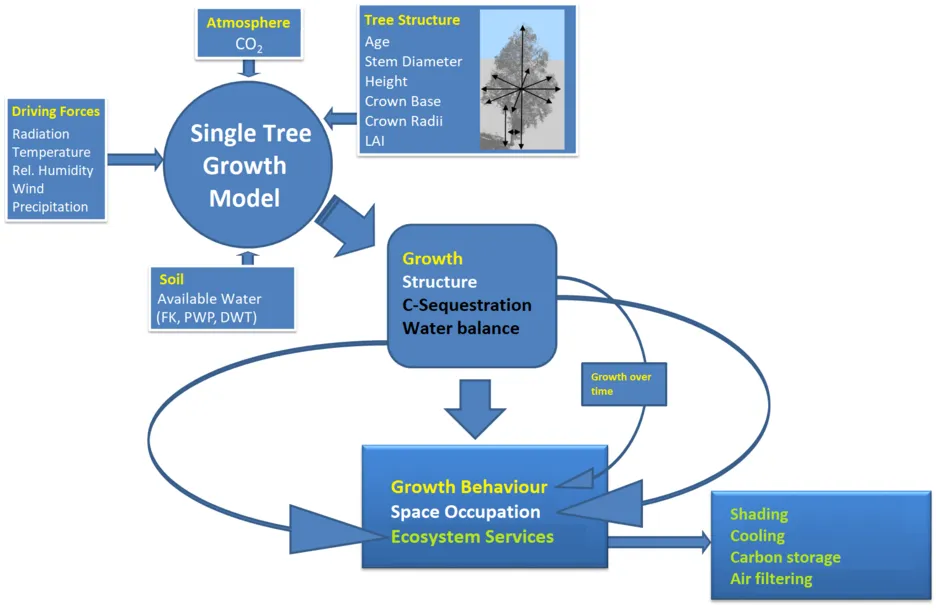Content and Research Questions of the Project
In the view of a fast changing climate is the question of plants, especially long-living trees and their provided ecosystem services of high relevance.
City trees are an integral part of urban areas, their growth and ecosystem services are - in particular for European cities - hardly researched. Knowledge about the growth of different species and different age classes at varying growth sites and different climate conditions are scarce.
Moreover the services of city trees have been quantified only to minor degrees. The aim of this research project was to study the growth, provided ecosystem services and perspectives of important and common urban tree species in a changing climate.
Objectives
Objective of the project was to model the growth of urban trees with an environment and climate sensitive single tree growth model in relation to the available ressources such as water and light from youth to high age. Ecosystem services like carbon storage, shading, cooling effect and run-off were quantified for important and common urban tree species for current climate conditions as well as under climate change scenarios.
Methods
The project was a continuation of the project City Tree I, which studied the growth, the space occupation and the services of the tree species small-leaved lime (Tilia cordata) and black locust (Robinia pseudoacacia) in the cities Munich and Wuerzburg.
The follow-up project City Tree II moreover dealt with the species plane (Platanus x acerifolia), horse chestnut (Aesculus hippocastanum).With the newly developed model CityTree the growth and ecosystem services of four urban tree species could be simulated in relation to site conditions.
